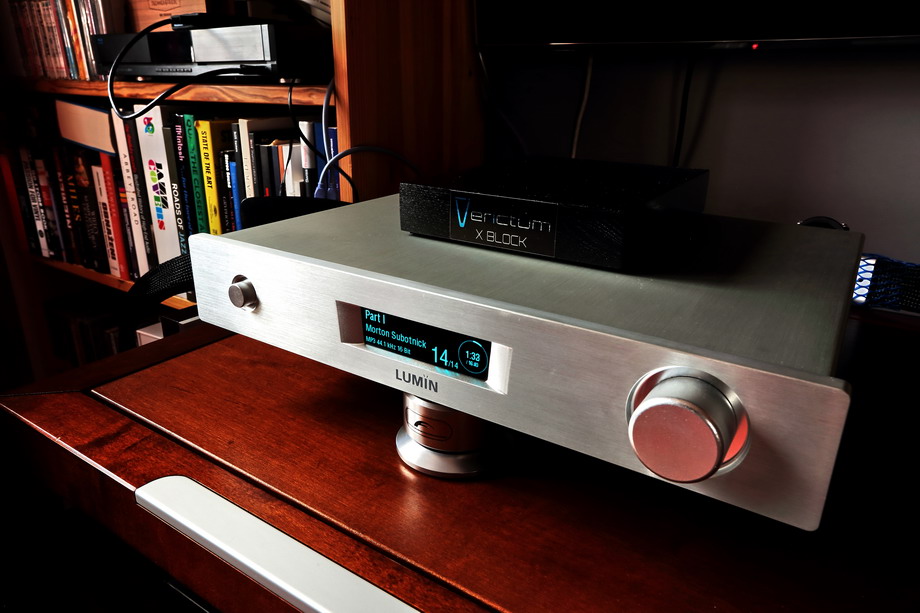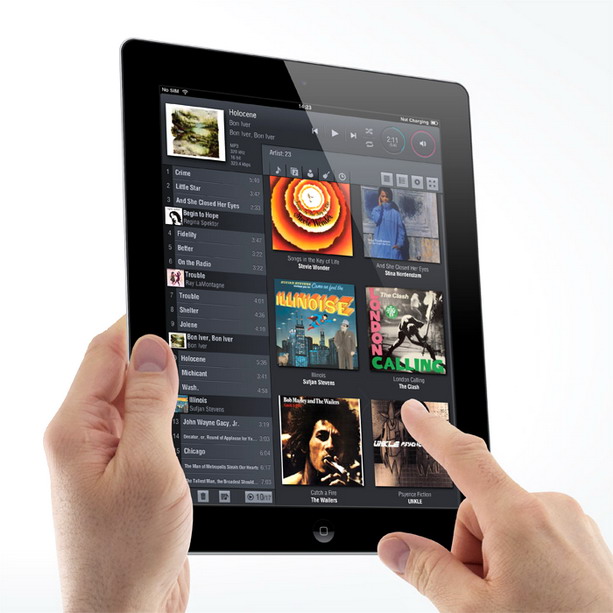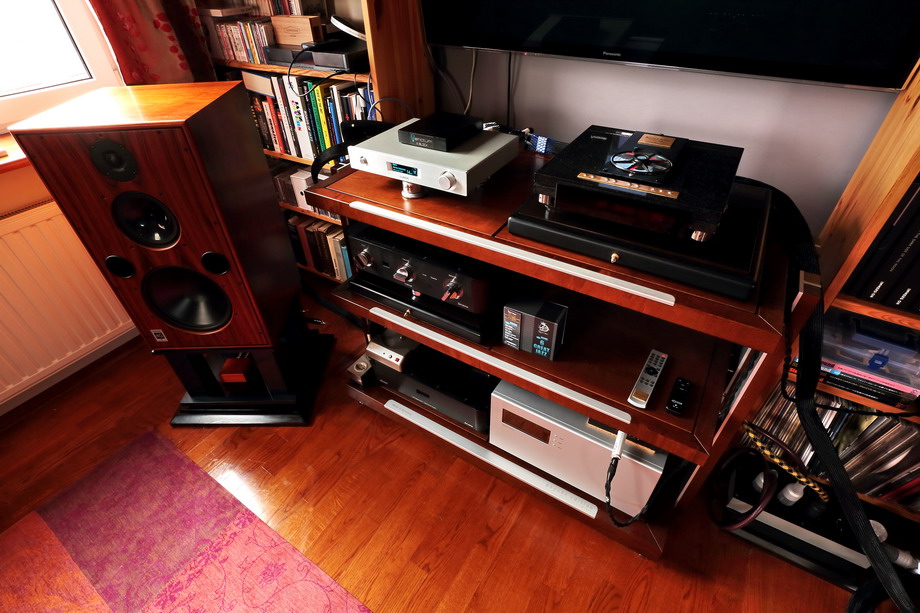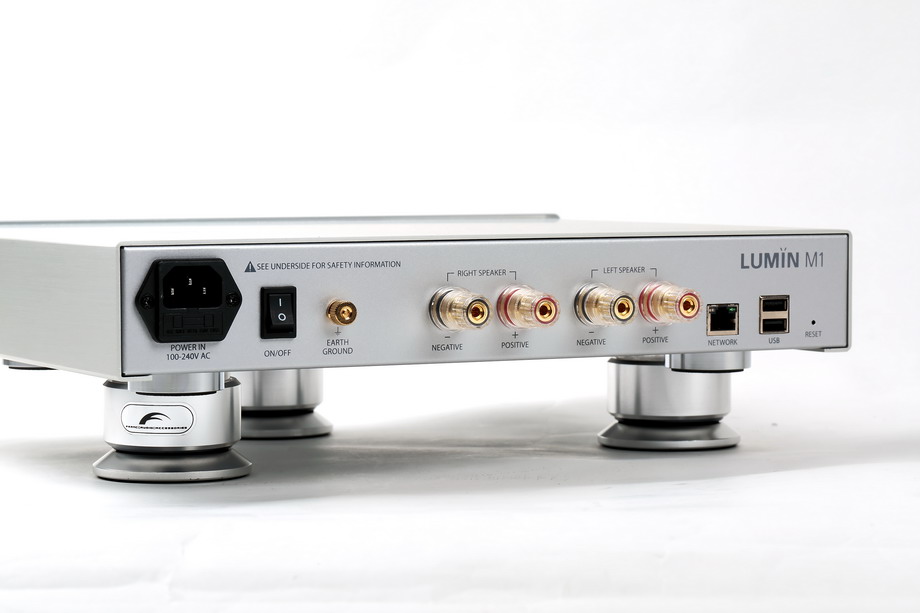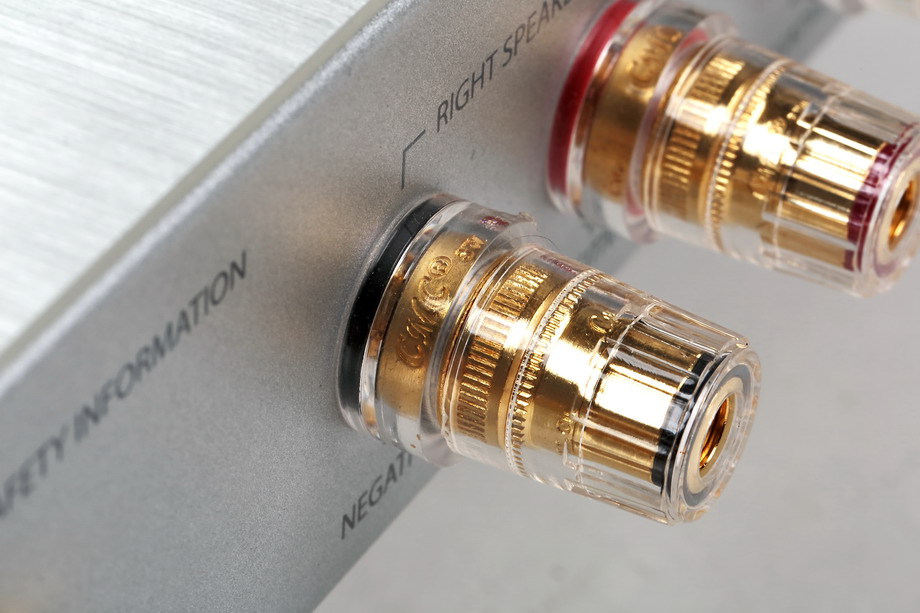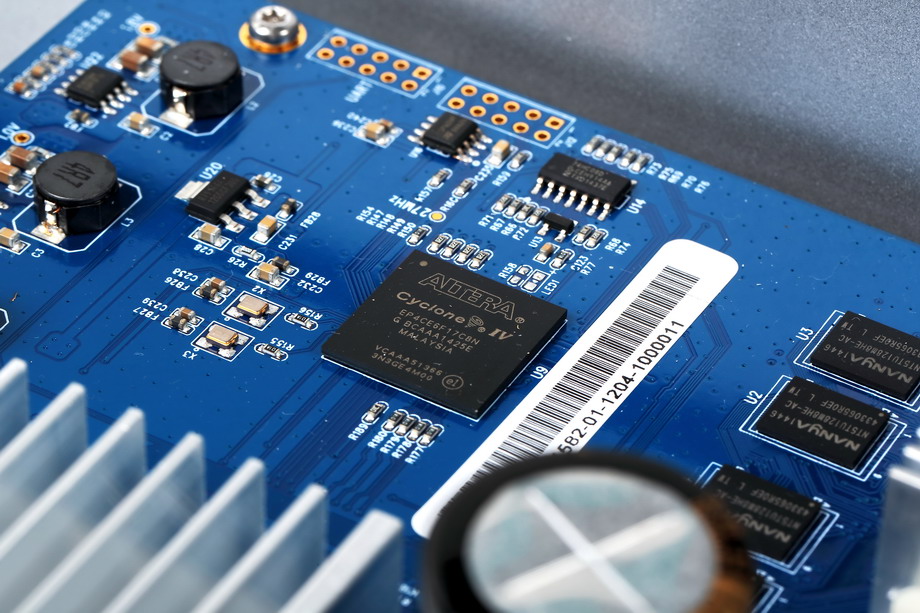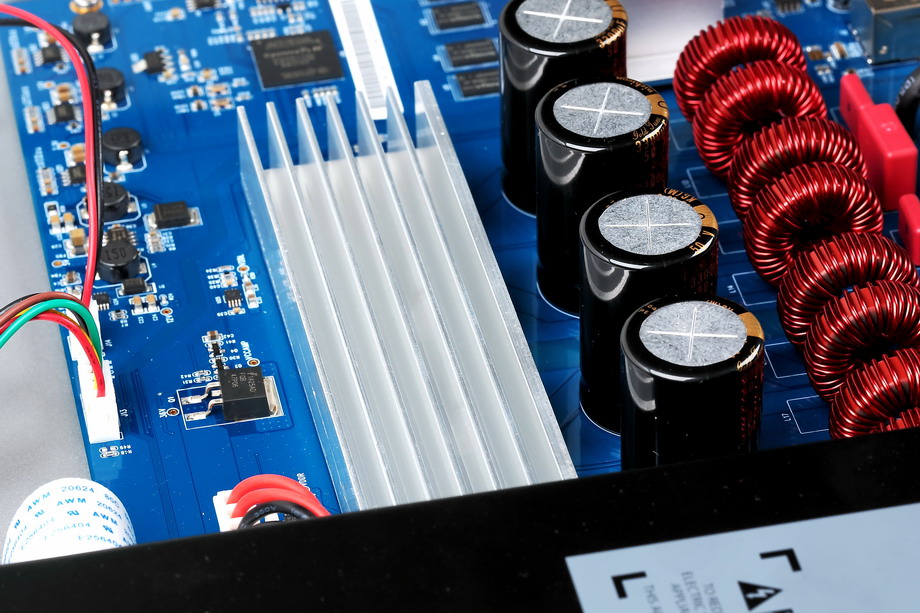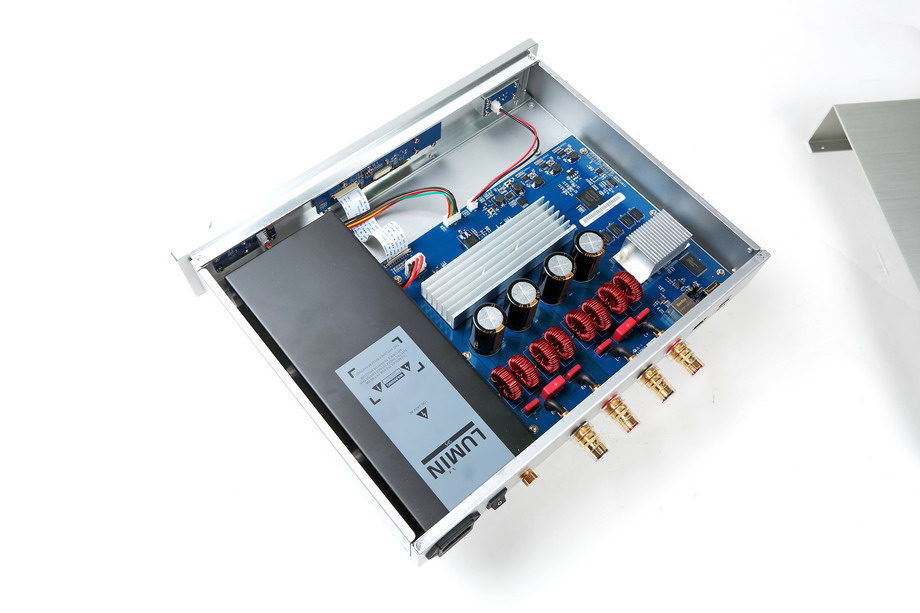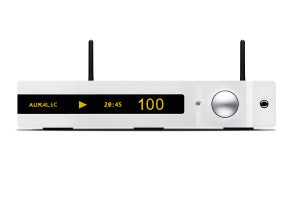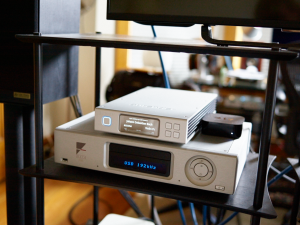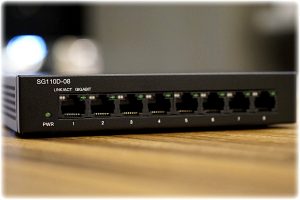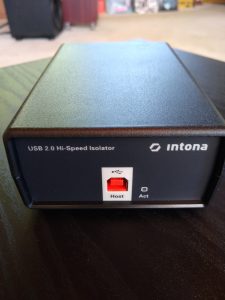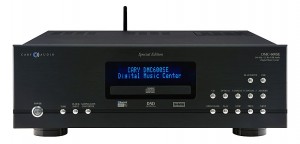When in 2005 Arcam, a company specializing in multi-box, mid-priced systems introduced their new Solo systems it seemed like a crazy move. The very first Solo 5.1 was in fact a home-theater system. It combined a multi-format transport (DVD, CD, but also SACD and a HDCD decoder!), home theater decoders and five power amps. Soon after that next products of this type were released including: Solo Movie 2.1 (multi-format stereo system), Solo Music (stereo) and Solo Mini (stereo). Today, after releasing in the meantime Solo Neo, Arcam offers another two Solo systems: Movie (with Blu-ray transport) and Music (with SACD, CD and Bluetooth).
As you can see the idea of all-in-one systems offered by renown audio brands survived until today. And not just survived—today most audio manufacturers offer such systems, even such high-end and exotic ones like the Swiss darTZeel.
After considering all that M1 becomes and obvious choice for the next product offered by Lumin. It was rather question of "when?" and not "if". The answer to this question is already known—now, in November 2015.
All-in-one systems are the ones that combine some source (or sources) with amplifier(s) in a single chassis. There are also such systems that include also speakers, like Naim Mu-so, for example. One might find some similarities between such systems and so called boom-boxes—I mean the idea behind both types is similar, realization is obviously different. Both types are supposed to fit in all necessary elements into a small chassis and to make it as user-friendly as possible.
M1
Lumïn specializes in music servers. They offer few models such as: S1, A1, T1 and D1. M1 is the first model of its type. Instead of using ideas of other manufacturers guys from Lumin came up with their own solution. Most take a music server, add a DAC and amplifier and voilà! They can offer all-in-one system.
M1 in comparison is more minimalist product—or puristic one if you will. Do you remember digital amplifier offered by TacT? It made a lot of fuss on the market some years ago—for years it was the only advanced digital amplifier on the market. Today it seems that every second amp is called "digital" which is not true—most of them are analogue class D amps. There are still quite few truly digital amplifiers available on the market.
These offer one key advantage—in fact they are powerful D/A Converters (it is also as TacT was described). Such amplifier modules made by TI were used for new Lumin device. Since it accepts only a digital signal it needs no digital-to-analogue conversion. Signal read from some HDD/NAS is decoded into PCM by music server section and send directly to amplifier section.
Since these amplifier modules work in class D (so produce only a minimum heat) and are powered using switched mode power supply M1's chassis can be very compact. Aluminum enclosure is very simplistic and yet stylish with a nice, blue display in the center of the front panel, volume control knob on the right and standby button and the left. This simplicity is a result of 1,5 years of hard work put into this project.
It is controlled using iOS app (Apple iPad, version 2 or later with iOS 5.0 or newer is required). Lumïn likes to use users' input to improve their app and that's why it works really well—only Aurender and Auralic offer equally good, reliable controlling apps for their products.
M1 offers power of 60 W @ 8 and 100 W @ 4 Ω. Since there is no DAC it sports no outputs and no inputs except for two USB 2.0 ports and a single Ethernet (1000Base-T) port. All user needs is a connection with router, that allows to control Lumïn, and another one with NAS and/or USB drive. The latter has to be formatted using FAT32 (a single partition), NTFS or EXT2/3.
The music server accepts PCM signals up to 32-bits and 384 kHz (DXD) but also DSD64 (2,8 MHz) and DSD128 (5,6 MHz). PCM signal might come from WAV, FLAC, Apple Lossless, MP3 or AAC M4A files, and the DSD one is accepted as DSF, DIFF files over DoP protocol. M1 offers "gapless" playback. It allows user to use popular streaming services like: Tidal and Qobuz. Volume might be controlled using a knob on M1's front, or using an app installed on a tablet or smart-phone.
You might have seen an information regarding possibility of converting PCM signals up to 96kHz to DSD but in fact it is possible only when using one of Lumin Music Servers. It is NOT possible when using M1 (see below).
A few simple words…
LI ON
Product Development Manager
WOJCIECH PACUŁA: How did the project called M1 start?
LI ON: We start the M1 project because we want to build a full digit system from audio file to speaker amplification. There is no DAC in the M1. We use a TI Class-D digital amplifier to directly drive the speakers output.
There is USB input - is it good enough to compete with Ethernet input? What is your opinion about USB and Ethernet?
USB file playback is on all LUMIN models. Personally I don't think there is a sound quality difference compare to network streaming from a NAS. Some people do not know how to setup a NAS so they can simply connect a USB HDD or thumb-drive on LUMIN. On the other hand, if you have a huge music library (my music library has around 5500 albums with size around 5TB), then a NAS is better for more HDD space and you can put the NAS in other location for convenience.
There is "number war" in streamers—more bits, higher sampling frequency etc. What is "enough" in your opinion?
In my opinion, music quality is mostly due to recording and mastering quality. I think PCM 96kHz/24-bit and DSD 2.8MHz are good enough.
Your devices offer option of converting PCM signal to DSD — why? Does that offer any advantages?
In the LUMIN app under LUMIN player Options, there is a "Re-sampling" setting. You can configure which PCM sampling rate to convert to DSD playback. IMO some PCM files when converted to DSD sounds more analog and fuller with more texture. It depends on the content. User can experiment and hear which type they prefer. This option is currently available for our Players: S1/A1/T1/D1, but it is NOT available for M1.
DSD is PDM type of signal. Digital amplifiers by TI are PDM type modulation device. It means that there is conversion from PDM (DSD) to PWM (PCM), right? Is it performed inside TI chip?
Yes, that is correct. DSD signal is converted into PWM before it reaches modulator inside TI chip.
SOUND
Recordings used for this test (a selection):
- Opus 3 DSD Showcase 1 (5,6 MHz), Opus 3, DSD128
- Yesterdays Klipsch II DSD128, Opus 3, DSD128
- Alan Parsons, Eye in The Sky, Arista/Analogue Productions, rip z DVD-A, WAV 24/192 (2005/1982)
- Aretha Franklin, I Never Loved A Man (The Way I Love You), Atlantic, rip z SACD, DSD (1967)
- Art Pepper, Intensity, Contemporary Records, rip z SACD, DSD (1960)
- Clannad, Nádúr, ARC Music/HD Tracks, FLAC 16/44,1 (2013)
- Dead Can Dance, Anastasis, [PIAS] Entertainment Group PIASR311CDX, "Special Edition Hardbound Box Set", USB drive 24/44,1 WAV (2012); review HERE
- Dżem, Zemsta nietoperzy, Pronit/remaster Damian Lipiński, DSD (1987/2015).
- John Coltrane Quartet, Ballads, Impulse!, rip z SACD, DSD (1962)
- Lars Danielson & Leszek Możdżer, Pasodoble, ACT Music, WAV 24/88,2 (2007)
- Nat "King" Cole, Love is the Thing, Capitol/Analogue Productions, rip z SACD, DSD (1957/2010)
- Perfect, Unu, Tonpress/remaster Damian Lipiński, DSD (1982/2015).
- Sting, The Soul Cages, A&M, rip z CD, WAV 16/44,1 (1991/1998)
All-in-one systems are created to make users' lives easier, more convenient. Also to let them save some money, but I think that convenience is the key feature. Such a device should work perfectly, without any "bugs", like M1 does, to really fulfill its primary job. Even more so, when it comes to systems that have to sort and play thousands of albums in different formats, tagged in different ways. In this particular case while enjoying the sound a lot I also paid attention to other, non-musical aspect of this device.
The App
Using controlling app is very comfortable. The iOS app might not look particularly nice but it effectively does its job and using it is intuitive. I didn't need to look for some on-line tips to find out how to do this or that. Over time I did read almost every tip I found and I learned some tricks especially about creating playlists but it was not something I could not live without. The basic operation of the device was very simple and effective. After all the idea is not to spend too much time on controlling the device but rather on listening to the music.
Still, if somebody asked me about tips regarding improvements of operation I'd suggested making this small wheel carrying information about track's time and present volume bigger—it is not that simple to hit it with a fingertip to change volume setting.
Setup
The setup process is very simple—place it where you want, connect it with LAN, with power outlet, speakers and turn it on. Lumïn will automatically search for NAS in your network, also for directly connected USB drives or pendrives. Downloading and installing the app is also very simple. At the very beginning Lumin creates index of all connected drives with music files and you don't have to worry about it anymore unless some changes to these drives are made—then M1 has to update the stored information.
Sound
Listening to M1's performance was even more "friendly" than controlling it. It this yet another product created by the same designers and again I could hear some characteristic sound features that one can find in all their creations. The sound is particularly smooth, liquid and seamless. One might say: warm. In this particular case no comment is required as this "warmth" is a very positive quality of M1's performance. Why? Because in my opinion music files offer "empty" sound regardless of bit-rate or sampling frequency. Lumïn offers performance with some emphasis on lower midrange and upper bass, which seems to be a good starting point.
This Player offers quite high "surprise" factor—most will be genuinely surprised by how natural its performance is. Considering audiophile standards this is not an expensive system. And yet it offers a refined performance. Despite already mentioned shift of tonal balance towards lower end sound stays open, expressive, emotional. This is the sort of presentation one expects from a nice analogue source. It involves listener emotionally, it is simply immersive. One doesn't feel like analyzing what one hears but rather allows oneself to be curious about how the music one is well familiar with might sound like.
I listened to many CD albums, that I usually listen to using some high quality Platinum SHM-CD, HQCD and other releases. Each and every one of them confirmed my first impression—Lumin designers focused their efforts on a beautiful reproduction of timbre, of vividness of the sound rather than of selectivity and separation. Smoothness is preferred over accuracy, its about the big picture rather than about tiny details. And that's how DSD files sound like, both from files and SACDs.
One has to remember that Lumin build its whole philosophy about availability of music in DSD format. As Mr Li On told me during interview for one of the previous reviews, the company was created because somebody hacked PS3 console which allowed to rip SACDs to DSD files. Today one might buy DSD files from many sources but back then it was a real breakthrough. M1's performance seems to be shaped in such a way to present the best features of DSD playback and not only with actual DSD playback but also with PCM's. Efforts focus around timbral accuracy and diversity, great imaging, and creating a believable musical spectacle.
Obviously it is relatively inexpensive system so one can't really expect the same level of performance as from high end system consisting of separate components. But when I listened to it I never really thought about advantages of much more expensive systems. M1 delivers good enough performance to make it truly interesting. It is capable of differentiating different recordings and I think its owners won't really have any reasons to complain about M1's performance. Especially considering that in many respects what they will get will be so refined that many even more expensive systems won't be able to match (in these respects) this level of performance.
One of the aspects of the sound that surprises is the depth of phantom images. Soundstage as such might not be particularly big, there is no way around it. Most instruments and voices are presented close to listeners and they sound natural, palpable, very much live-like. That's what many of us looks for, that's what we dream of, right? This might not be perfectly linear presentation but is serves a purpose of delivering particularly 'musical' performance.
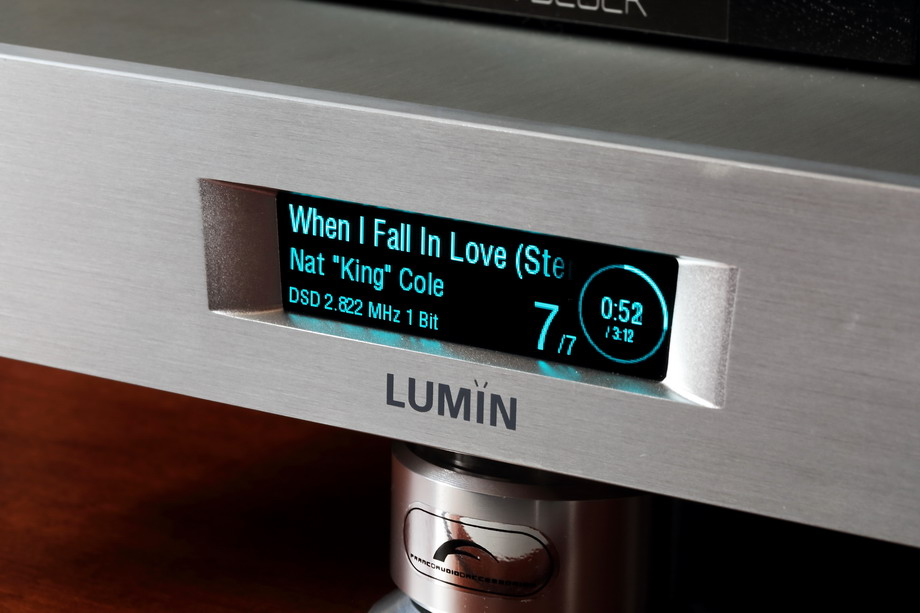
I mentioned before that M1 could be described as warm sounding—that is true but it does not come at the cost of treble or even upper midrange roll off. Listen to Nat "King" Cole's on Love is The Thing (stereo version released by Analogue Productions), and you will hear a voice with lots of sibilant. The mono version sounds dark, smooth—that's how we remember Nat's voice. Possibly the stereo version, as a backup, was not recorded using as sophisticated system as the mono one, or simply when preparing it producers did not such a good job as with mono version. Anyway, Lumïn nicely conveyed this difference without hiding it, or even without making it less important.
No doubt that DSD files sound best with M1. DSD was what drove founders of Lumïn to even start the brand so no wonder their devices perform best with DSD files. But it doesn't mean that other types of files sound bad, as they are also delivered in a likable way. Even mp3 files deliver decent sound. With 24 bit PCM files one might get really close to DSD performance. So one should treat M1 as a device that delivers really good performance no matter what sort of files are used but whenever possible DSD should be the first choice as it will always deliver best possible performance.
Choices made by designers of every device result in some compromises when it comes to device's performance. In this particular case one should be aware of not the best possible selectivity. Each individual event on the soundstage is not precisely pointed out, or cut out of the background. Yes, phantom image are shown as 3D objects, but listener perceives rather a large event happening in front of him without to many distinct details. Dynamics is quite good but only when one considers dynamics of each individual instrument. Dynamics of the whole performance is somewhat average. This is, in my experience, an inherent feature of both, music servers and digital amplifiers.
And finally the bass—the only sound feature that each potential M1 user should carefully consider. It is not particularly well controlled nor extended. It is very coherent with upper part of frequency range but I would suggest being cautious when M1 is used with large speakers. With monitors M1 should sound very good as they surely won't offer particularly good bass extension, but with large speakers one might find bass a bit too "loose".
Summary
So called "regular users" when choosing all-in-one, lifestyle systems take into consideration the design, functionality and price. Lumïn is an audiophile system, as its creators accentuate. So it might seem that number of potential user is therefore limited.
But I don't think this is the case—its looks easily places it in the mainstream and using it is very convenient. So there is nothing that often scares off those "regular users" from other audiophile systems. And yet it offers audiophile sound quality—beautiful, "analogue", immersive performance. Not that it is a perfect sound—one can't expect that, but it is really good. It can not be modified or upgraded but "regular users" don't really expect that. So most likely it is one of the best systems offering combination of high quality sound and convenient usage that this sort of money can buy. RED Fingerprint award.
DESIGN
Device uses a compact, aluminum nicely made and finished chassis. A nice blue display sits in the center of the front panel Despite its small size it delivers quite a lot of information including: track title, artist, volume level, file format (type, bit-rate, sampling frequency), time, number—so in short, everything one might need.
Rear panel sports two USB 2.0 ports, Ethernet port, two pairs of CMC speaker posts and IEC inlet accompanied with on/off switch. Next to it there is a earth/ground post that is connected with power supply. One might consider either a separate grounding, or some sort of ground conditioner like, for example, Entreq or Verictum.
Internal design of M1 is unlike almost any other audio product I've seen—10 year ago we would have probably not even known what kind of device we would be looking at. There are three main sections, each based on integrated circuits. Next to the USB input there is a receiver followed by microprocessor—the "heart" of the Player sporting a large radiator. It is than followed by Altera Cyclone IV FPGA with implemented digital filters. From there signal is sent to Texas Instruments digital amplifiers modules, hidden under mid-size radiator. These work in PWM (Pulse Width Modulation) mode. There is no preamplifier section—volume control is performed in digital domain in power amplifiers.
Signal is converted into analogue form just before speakers outputs using simple analogue filters—in fact they have a large influence on the quality of sound that we can hear. They sport high quality Nichicon capacitors, core coils and polypropylene Wima capacitors in the output stage. There are a lot of coils since amplifier offers balanced output—but runs (plus and minus) are active (usually minus is connected with ground).
The SMPS is nicely shielded.
Very clean design—it's really surprising that such a good sound quality is achieved with just few chips and capacitors.
Specifications (according to manufacturer):
- Streaming protocol: UPnP AV
- Supported audio files formats:
- DSD: DSF (DSD), DIFF (DSD), DoP (DSD)
- PCM lossless: FLAC, Apple Lossless (ALAC), WAV, AIFF
- Compressed (lossy) formats: MP3, AAC (in M4A container)
- Sampling frequency, bit-rate:
- PCM, 44,1kHz — 384 kHz, 16 — 32 bits, stereo
- DSD, 2,8 MHz — 5,6 MHz, 1 bit, stereo
- Inputs:
- Ethernet Network 1000Base-T
- USB - flash drive, USB hard disk
- Power: 60 W @ 8 Ω | 100 W @ 4 Ω
PIXEL MAGIC SYSTEMS Ltd.
Price (when reviewed): 11 900 PLN
Pixel Magic Systems Ltd. | Unit 603-605
IC Development Centre | No. 6 Science Park West
Hong Kong Science Park | Hong Kong
DESIGNED IN HONG KONG
MADE IN CHINA
Text: Wojciech Pacuła
Images: Wojciech Pacuła | Lumïn




